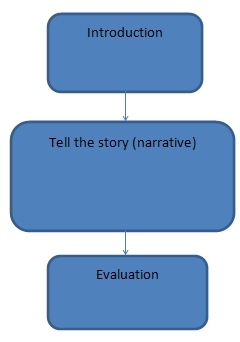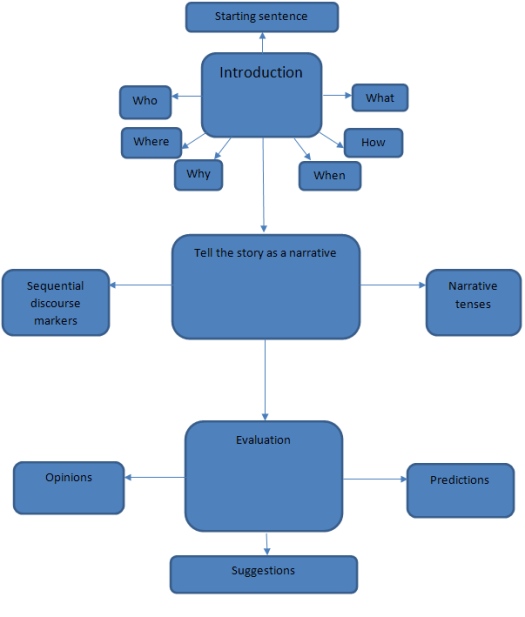IELTS Speaking Task 2: A Systematic and Structural Approach
David Beauchamp, Thailand
David Beauchamp is an ELT teacher and coordinator based in Southern Thailand. He specializes in EAP and Test Preparation. E-mail: beauchdvd@hotmail.co.uk
Menu
The challenge
The challenge
Introduction
Tell the story
Evaluation
To recap…
Anything else to add?
The second part of the IELTS speaking test can be very intimidating for candidates. Unlike parts one and three in which the examiner will feed them questions to keep the conversation flowing, candidates have to fill around two minutes with non-stop speech. That two minutes can seem like an hour to nervous test takers, and some who would have little problem demonstrating these skills in a less formal setting may well find themselves stumbling on the day due to the pressure.
Fortunately, I have found that speaking task two is probably the easiest to prepare for effectively. The following approach is based around students structuring their spoken response logically and providing opportunities to use specific grammar and vocabulary to maximize their scoring potential.
It should be noted that this approach has been compiled for students aiming for a 6-6.5 score, around intermediate to upper-intermediate level.
Reduce the intimidation factor for students by showing them how to breakdown the two minute speaking period into manageable chunks. I present the task as being comprised of three parts: an introduction, a story, and an evaluation, as shown below:

Let’s look at these parts individually:
The introduction is important because if the candidate starts strongly, they will feel confident and be less likely to stumble throughout the response. It’s a good idea to teach it in two parts:
- The starting sentence
- The background
The starting sentence
Start with a ready-made sentence like the one below:
“OK, so, what I’m going to talk about is a holiday I took which I remember well.”
The underlined part of this sentence can be used to introduce any topic and allows the candidate to start speaking immediately without succumbing to hesitation.
Grammar buffs will also have noticed something about this sentence; it contains an embedded clause…

…making it a complex sentence, one of the requirements to achieve 6 or higher in the grammatical range and accuracy.
But that’s not all. The first two words…
“Ok, so…”
… are what we call verbal discourse markers. They help structure the speech and make it sound more natural. Discourse markers are also part of the marking criteria for examiners; candidates need to use them well to score high in the fluency and coherence category.
So this opening sentence, or one similar to it, is a kind of opening hat-trick which:
- Provides a simple way to start without hesitation
- Includes a complex sentence
- Includes two discourse markers
Pretty effective, I’m sure you’ll agree. Please note though that examiners don’t like to hear things that sound like they have been memorized. Only have your students go with the set starting sentence if they can make it sound natural and not forced.
Background
This is the part where the candidate sets the scene of the story they are going to tell. Bear in mind that speaking task two usually asks the speaker to relate a past story of some kind. Giving the background is a good opportunity to pad out the response and get in some good vocabulary and grammar. The question may be something like Describe a holiday you enjoyed.
To set the background, get your students to think of the following questions:
Who? What? Where? When? Why? How?
Thus, giving the background might go something like this:
“I went on this holiday a few years ago, back in 2011 (when). It was to an island which is off the south coast of France (where). I went with my housemates and my girlfriend whom I had met just a few months earlier (who). We had decided to take a holiday because we had just finished university and wanted to celebrate by taking a trip that we would never forget (Why)”
This is a good way to start speaking fluently about the subject. It’s also a nice easy way to add more complex sentences. Look at the words in bold. What are they? Relative pronouns. And what do relative pronouns mean? Complex sentences! Personally, I love relative pronouns because they are so easy to use. Everyone can talk about “I have a friend who ____” or “We stayed at a hotel where ____”.
So the intro should take the form of a good starting sentence and some background setting. Simple stuff, easy to remember.
The second part of the task can be generally described as telling the story of what happened. Tell your students to imagine telling the story of a movie, scene by scene. Basically it is a narrative.
Two points to make about narratives:
- They require narrative tenses.
- They require structuring with appropriate sequential discourse markers.
Narrative tenses
These are past simple, past continuous, past perfect and past perfect continuous. Anybody can use past simple, but it is worth stressing to your students the importance of staying consistent because they can often unthinkingly lapse into present tenses.
To really impress the examiners though, they should be looking to get some of the other tenses in, or a combination of tenses in a sentence. Telling a story should provide ample opportunities for this. Look at this example:
“While we were sitting on the beach, my girlfriend was bitten by a monkey”
Two narrative tenses used effectively. And look at that first word, while. It’s a subordinator used to join two clauses. And what do subordinators mean? Complex sentences!
You can also use past perfect to say why things happened:
“We went back to the hotel because the monkeys had become aggressive”
Using a range of tenses and complex sentence structures appropriately will impress the examiners and maximize scores.
Sequential discourse markers
These should be fairly easy for most students who are pre-intermediate level or above. They consist of words and phrases such as:
First; next; after that; when we had …, we…; during…
…and so on. They make the narrative flow more smoothly and sound nice. And they are on the list of scoring criteria
Overall, the story telling part of the task should be the longest section and make up the bulk of the speech.
So the introduction has been done and the candidate has told the story of their holiday/meal at a restaurant/time they helped someone. At this point the student may have run out of things to say in the last thirty seconds or so.
Don’t panic. This is where part three comes in to neatly tie up the speech. The candidate should spend the last 20-30 seconds reflecting on the story. They can do this in three ways:
Give opinions
This is pretty simple. Your students can use language chunks such as:
I think…; In my opinion…; I’ve often found that….
“In my opinion, going on holiday with your friends is the most fun you can have”
…and so on.
This is also a chance for candidates to show off their vocabulary. Vocab is often quite difficult to use in task two because the candidate won’t know what is going to be asked. They can, however, learn some useful language which can be used in a variety of situations. Good examples of this are adjectives and intensifiers:
The food was absolutely foul!; We were utterly mystified; The temples of Cambodia are simply breath-taking.
Not only is this nice vocabulary for description, but it also ticks off another area on the IELTS score card, collocation (for the layman, that’s sticking two words together in the correct/appropriate way).
Give suggestions
Another good way to fill the remaining time with something a bit more varied. Modal verbs and other language chucks can come in handy here:
“If you’re going to Vietnam you should…”; “It’s a good idea to … if you…”; “People really ought to travel as light as they can”
Give predictions
This is a nice way to vary tenses and also get some adverbs in for extra vocabulary/collocation points:
“Next year, I’ll definitely go to Ibiza again”; “I doubt I’ll travel by Eurostar in the future”; “I‘ll probably stay at home next summer”
So the structure for a typical IELTS speaking task 2 response should look something like this:

And here is a breakdown of some useful grammar and vocab:
|
Introduction |
Story as narrative |
Evaluation |
| Grammar |
Relative pronouns, embedded clauses |
Narrative tenses: Past simple, perfect and continuous |
Modal verbs, adverbs, future tenses |
| Vocabulary |
Discourse markers |
Sequential discourse markers |
Adjectives and intensifiers |
Yes. This structure is generally based on the likelihood that the question will require the candidate relate a past event/experience. Having looked at dozens of past papers, it seems that this is the case about 90% of the time.
It is just possible though that the candidate will be “thrown a curve ball” and get a question that is not directly related to a past experience.
Consider the following:
“Talk about a piece of electrical equipment that you use often”
Although this is not directly related to past experience, the response can be tailored to fit the question by turning the narrative into an account of what usually happens (present simple tenses), or reducing the narrative section and bulking out the evaluation.
Either way, make sure you make this point clear to your students, and practise some task two questions which are not directly related to the past.
Good luck!

Please check the Methodology & Language for Secondary Teachers course at Pilgrims website.
Please check the Teaching Advanced Learners course at Pilgrims website.


|